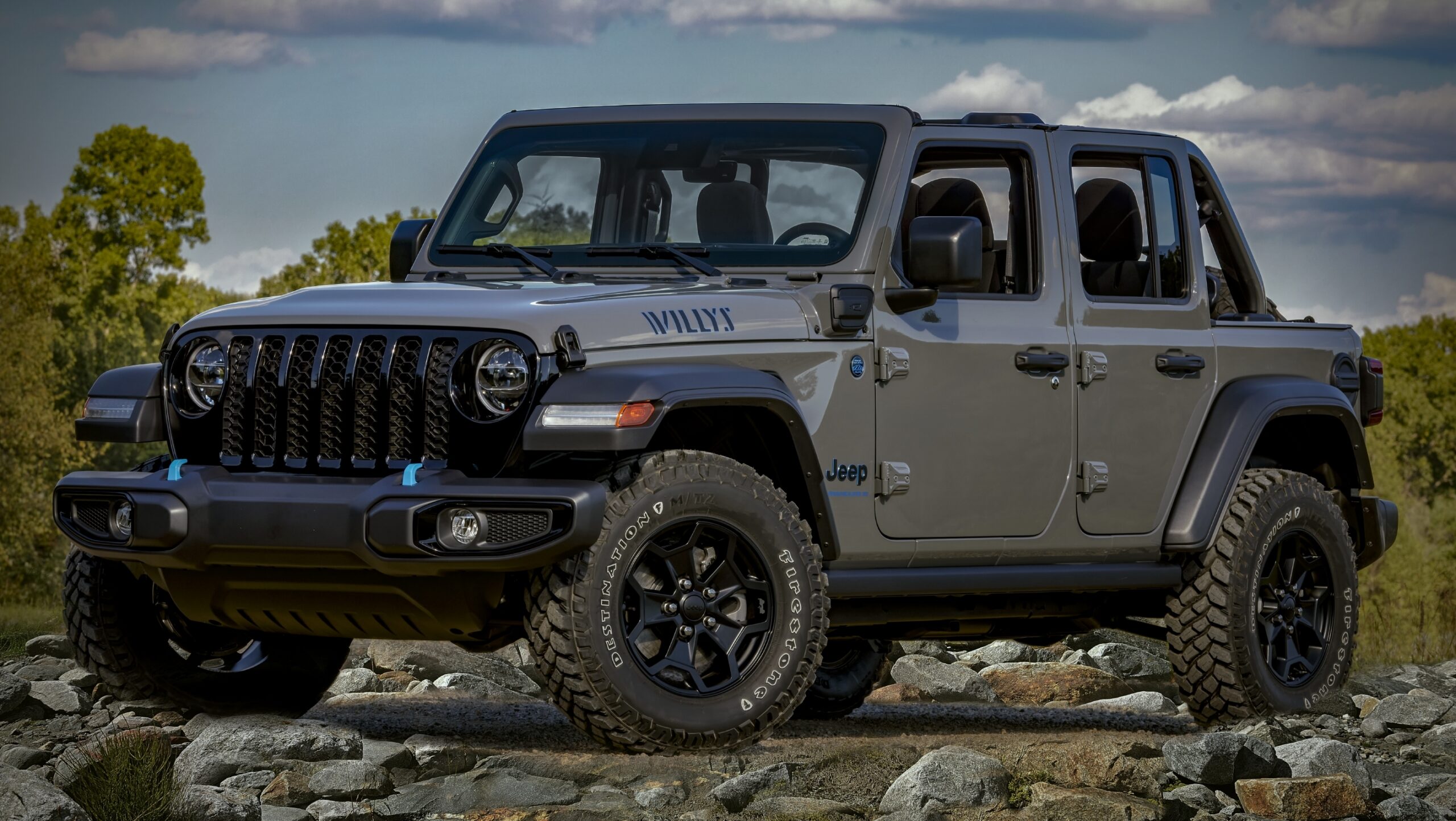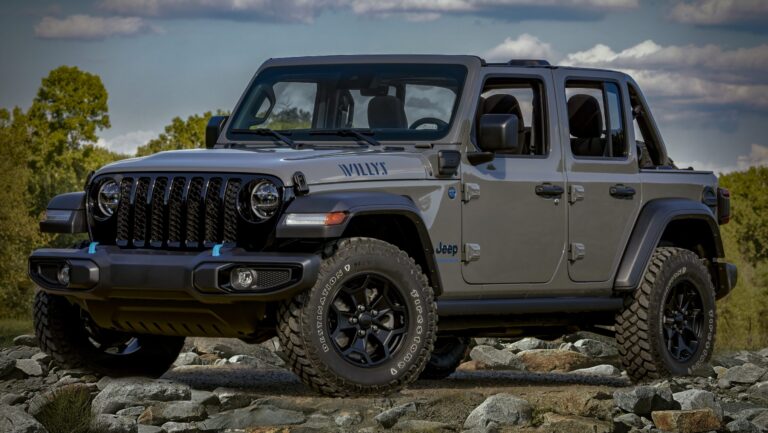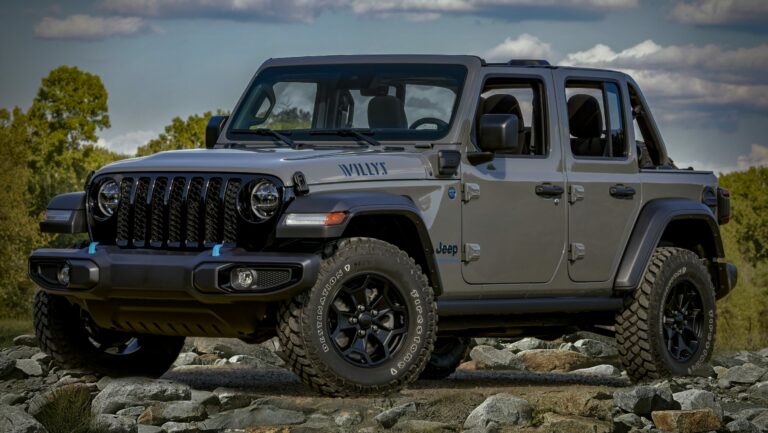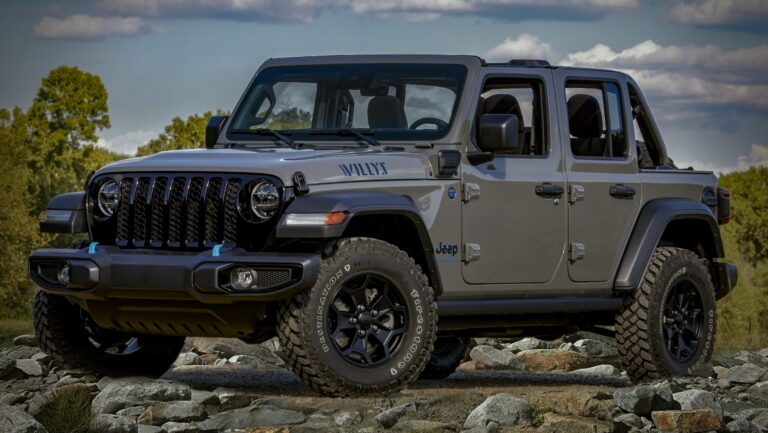Jeep Combat Rims For Sale: Unleash Your Off-Road Beast
Jeep Combat Rims For Sale: Unleash Your Off-Road Beast jeeps.truckstrend.com
For the dedicated off-road enthusiast, the pursuit of superior performance and rugged aesthetics often leads to a crucial upgrade: "Jeep Combat Rims." More than just a stylish accessory, these specialized wheels are the foundation for conquering the most challenging terrains, offering enhanced durability, unparalleled traction, and a distinct, aggressive look that screams capability. If you’re looking to elevate your Jeep’s off-road prowess and ensure its resilience in the face of extreme conditions, understanding the world of combat rims is your first essential step.
This comprehensive guide will delve into every aspect of Jeep combat rims, from their fundamental definition and myriad benefits to the different types available, critical considerations for purchase, and even the nuances of installation and maintenance. Whether you’re a seasoned rock crawler or an aspiring trail explorer, prepare to unlock the full potential of your Jeep with the right set of combat-ready wheels.
Jeep Combat Rims For Sale: Unleash Your Off-Road Beast
What Exactly Are Jeep Combat Rims? Defining the Ultimate Off-Road Wheel
The term "Jeep Combat Rims" often conjures images of military-grade durability and extreme functionality. While not always directly from a battlefield, these rims are engineered to withstand the harshest off-road environments, far exceeding the capabilities of standard factory wheels. At their core, combat rims are heavy-duty wheels designed for vehicles that routinely face rocks, mud, sand, and severe impacts.
The most prominent feature associated with "combat rims" in the off-road community is the beadlock wheel. A true beadlock wheel employs an outer ring that physically clamps the tire’s bead against the wheel’s rim, preventing the tire from de-beading (coming off the rim) even at extremely low tire pressures. This ability to run single-digit PSI significantly increases the tire’s contact patch, providing immense traction on slippery rocks, loose dirt, and deep sand – a critical advantage for serious rock crawling and technical trails.
Beyond true beadlocks, the term "combat rim" can also refer to:
- Simulated Beadlock Wheels: These wheels feature an outer ring that mimics the appearance of a true beadlock but does not offer the same functional clamping mechanism. They provide the aggressive aesthetic without the maintenance or legal considerations of true beadlocks.
- Heavy-Duty Off-Road Wheels: Even without a beadlock system, many aftermarket off-road wheels are built with thicker materials, reinforced spoke designs, and higher load ratings than stock wheels. They are designed to absorb impacts and resist bending or cracking under the stress of aggressive off-roading.

Common materials include high-strength aluminum alloy for lighter weight and corrosion resistance, and steel for maximum durability and often a lower price point, though at the cost of increased weight. The "combat" moniker reflects their robust construction and ability to perform reliably in demanding, "combat-like" scenarios on the trail.
The Unrivaled Benefits of Upgrading to Combat Rims
Investing in a set of Jeep combat rims offers a multitude of advantages that directly translate to superior off-road performance, enhanced safety, and a more confident driving experience on the trails.

Enhanced Off-Road Performance:
- Unmatched Traction (True Beadlocks): The primary benefit of true beadlocks is the ability to air down tires to extremely low pressures (e.g., 5-8 PSI) without fear of de-beading. This dramatically increases the tire’s footprint, providing unparalleled grip on challenging surfaces like slick rock, deep mud, or soft sand, allowing your Jeep to crawl over obstacles that would typically cause wheel spin.
- Superior Durability: Combat rims are built tough. Their reinforced construction means they can withstand impacts from rocks, roots, and other trail hazards that would bend or crack a standard wheel. This resilience reduces the risk of trailside damage and costly replacements.
- Improved Stability: By allowing lower tire pressures, beadlocks can contribute to a more stable ride over uneven terrain, as the tire can conform more effectively to the ground’s contours.

-
Increased Safety: Losing a tire bead on a steep incline or descent can lead to a loss of control and potentially dangerous situations. True beadlock rims virtually eliminate this risk, keeping the tire securely seated on the rim even under extreme lateral forces or low pressure, ensuring safer navigation through treacherous terrain.
-
Aggressive Aesthetics: There’s no denying the visual impact of combat rims. Their robust design, often featuring exposed bolts and a rugged finish, instantly transforms your Jeep’s appearance, giving it a more purposeful, aggressive, and trail-ready stance that truly reflects its capabilities.
-
Long-Term Value: While the initial investment might be higher, the durability of combat rims often means they outlast standard wheels in off-road environments. Their ability to withstand punishment can save you money on repairs and replacements in the long run.
Types of Jeep Combat Rims: Choosing Your Weapon Wisely
Understanding the different categories of combat rims is crucial for making an informed decision that aligns with your specific off-roading needs, budget, and local regulations.
-
True Beadlock Wheels:
- Mechanism: These wheels feature an outer ring (the beadlock ring) that bolts directly to the wheel, sandwiching the outer tire bead against the wheel’s flange.
- Pros: The ultimate solution for extreme off-roading, allowing ultra-low tire pressures for maximum traction and virtually eliminating de-beading.
- Cons: Generally not DOT (Department of Transportation) approved for highway use due to the potential for bolts to loosen or the ring to deform, leading to safety concerns at high speeds. They require more maintenance (regular re-torquing of bolts), are heavier, and are typically the most expensive option.
-
Simulated Beadlock Wheels:
- Mechanism: These wheels have a decorative outer ring that mimics the appearance of a true beadlock but does not functionally clamp the tire bead. The tire mounts like a conventional wheel.
- Pros: Offer the aggressive "combat" aesthetic without the legality issues or maintenance demands of true beadlocks. They are lighter and more affordable, and fully street legal.
- Cons: Do not provide the low-pressure benefits or de-beading protection of true beadlocks.
-
Heavy-Duty Off-Road Wheels (Non-Beadlock):
- Mechanism: These are conventional wheels but are significantly stronger and more robust than factory or standard aftermarket wheels. They often feature thicker castings, reinforced designs, and higher load ratings.
- Pros: Excellent durability for general off-roading, fully street legal, often more affordable than beadlocks, and lighter than steel wheels.
- Cons: Do not offer the same low-pressure capabilities or de-beading protection as true beadlocks.
Material Considerations:
- Aluminum Alloy: Lighter, better heat dissipation, corrosion resistant, and come in various finishes. Ideal for performance-oriented builds where unsprung weight is a concern.
- Steel: Heavier but incredibly strong and often more affordable. Can be more easily repaired (bent back into shape) on the trail compared to aluminum. Prone to rust if not properly coated.
Key Considerations Before Purchase: Making the Right Choice
Before you commit to a set of Jeep combat rims, several critical factors must be thoroughly evaluated to ensure compatibility, safety, and satisfaction.
- Vehicle Compatibility (Bolt Pattern & Size): The most fundamental consideration. Your new rims must match your Jeep’s bolt pattern (e.g., 5×5 for JK/JL, 5×4.5 for TJ/YJ, 5×5.5 for older CJs) and be of an appropriate diameter (e.g., 17-inch, 18-inch).
- Backspacing and Offset: These measurements determine how far your wheel sits in or out from the vehicle’s hub. Correct backspacing is crucial for tire clearance (preventing rubbing on suspension components or fender flares), optimizing steering geometry, and maintaining proper scrub radius. Incorrect backspacing can lead to premature wear on steering components and poor handling.
- Intended Use: Are you building a dedicated rock crawler that sees minimal street time? A true beadlock might be ideal. Is your Jeep a daily driver that occasionally hits moderate trails? A simulated beadlock or heavy-duty off-road wheel might be a better, more practical choice.
- Street Legality (Crucial for True Beadlocks): As mentioned, true beadlock wheels are generally not DOT approved for highway use in most jurisdictions. Check your local laws and regulations before purchasing, especially if your Jeep is also a street vehicle. Simulated beadlocks and heavy-duty non-beadlock wheels are typically street legal.
- Weight: Heavier wheels (especially steel) increase unsprung weight, which can negatively impact fuel economy, acceleration, braking, and suspension performance. Lighter aluminum options mitigate this, but often at a higher cost.
- Budget: Jeep combat rims range widely in price, from budget-friendly steel options to high-end forged aluminum true beadlocks. Determine your comfortable spending limit.
- Tire Compatibility: Ensure the width of the rim is appropriate for the width of the tires you plan to run. Too narrow or too wide can negatively affect tire performance and wear.
- Maintenance Commitment: True beadlocks require more frequent inspection and re-torquing of the beadlock ring bolts to ensure safety and performance, particularly after initial installation and off-road trips.
The Installation Process: A Step-by-Step Guide (for True Beadlocks)
While professional installation is always recommended for critical components like wheels, understanding the process for true beadlock rims can be empowering. Note that this is a simplified overview; always refer to the manufacturer’s specific instructions.
- Gather Tools and Safety Gear: You’ll need a torque wrench, sockets, tire iron, bead lubricant, air compressor, jack, jack stands, and personal protective equipment (gloves, safety glasses).
- Prepare the Wheel and Tire: Lay the wheel face-down. Apply generous bead lubricant to the inner tire bead and carefully seat it onto the wheel’s inner lip.
- Position the Outer Bead: Flip the wheel over. Position the outer tire bead evenly around the wheel’s outer flange.
- Install the Beadlock Ring: Place the beadlock ring over the outer tire bead, aligning the bolt holes. It’s often helpful to start with a few bolts loosely threaded to hold the ring in place.
- Bolt Installation and Torquing: This is the most critical step.
- Insert all bolts and hand-tighten them.
- Follow the manufacturer’s recommended torquing sequence (usually a star or crisscross pattern) to ensure even pressure distribution.
- Torque the bolts in multiple stages (e.g., 1/3, 2/3, final torque spec) to the manufacturer’s precise specifications using a calibrated torque wrench. This ensures the bead is properly seated and prevents warping of the ring.
- Inflate the Tire: Inflate the tire to the desired pressure.
- Balance the Wheel: Due to the weight of the beadlock ring and bolts, balancing can be challenging. Many off-roaders use internal balancing beads or opt for dynamic balancing at a specialized shop.
- Post-Installation Check: After driving a short distance (e.g., 50-100 miles) and especially after the first off-road trip, re-torque all beadlock ring bolts. This is crucial as the tire bead can settle.
For simulated beadlocks and heavy-duty non-beadlock wheels, the installation process is similar to that of any conventional wheel, involving mounting the tire, balancing, and installing it on the vehicle.
Tips for Maximizing Performance and Longevity
To get the most out of your Jeep combat rims and ensure they last for years of rugged adventures, follow these tips:
- Regular Inspection: After every serious off-road trip, inspect your rims for any signs of damage like dents, cracks, or loose bolts. Address issues promptly.
- Maintain Proper Torque (Beadlocks): Consistently re-torque your beadlock ring bolts. Neglecting this can lead to air leaks, tire damage, or even catastrophic failure.
- Clean Regularly: Mud, dirt, and road salt can cause corrosion, especially on steel wheels or around beadlock rings. Clean your rims thoroughly after off-roading.
- Monitor Tire Pressure: Even with beadlocks, running excessively low pressure when not needed (e.g., on pavement) can accelerate tire wear and affect handling. Understand the limits of your setup.
- Proper Storage: If storing your Jeep for extended periods, ensure tires are properly inflated or remove the wheels to prevent flat spots.
Price Table: Jeep Combat Rims For Sale
The price of Jeep combat rims varies significantly based on brand, material, type (true beadlock, simulated, heavy-duty), size, and specific features. The table below provides a general price range per wheel as of early 2024. Prices are subject to change and may vary by retailer.
| Brand/Model (Example) | Type | Material | Size (e.g., 17×9) | Price Range (per wheel) | Key Feature/Notes |
|---|---|---|---|---|---|
| Raceline RT23 Mamba | True Beadlock | Aluminum | 17×8.5 | $450 – $550 | SFI-approved for racing, high strength, popular in competitive rock crawling. Not DOT. |
| KMC KM235 Grenade | True Beadlock | Aluminum | 17×9 | $480 – $580 | Aggressive styling, race-proven performance. Not DOT. |
| Method Race Wheels 305 NV | Simulated Beadlock | Aluminum | 17×8.5 | $250 – $350 | Iconic design, strong, lightweight, street legal. |
| Fuel Off-Road D579 Vector | Simulated Beadlock | Aluminum | 17×9 | $280 – $380 | Rugged multi-spoke design, wide range of fitments, street legal. |
| Black Rhino Abrams | Heavy-Duty (Non-Beadlock) | Aluminum | 17×9.5 | $260 – $360 | Military-inspired design, high load rating, durable, street legal. |
| Pro Comp Steel Wheels (Various) | Heavy-Duty (Non-Beadlock) | Steel | 15×8 – 17×9 | $80 – $150 | Extremely durable, budget-friendly, heavy. Often basic black finish. |
| Trail-Gear Creeper Locks | True Beadlock | Steel | 17×9 | $250 – $350 | More affordable true beadlock option, heavy, requires painting/coating. Not DOT. |
Note: These are illustrative prices and may not reflect current market conditions or specific retailers.
Frequently Asked Questions (FAQ) About Jeep Combat Rims
Q: Are "combat rims" the same as beadlock wheels?
A: While often used interchangeably, "combat rims" broadly refers to any heavy-duty, off-road-specific wheel. True beadlock wheels are a specific type of combat rim designed to mechanically clamp the tire bead. Simulated beadlocks and heavy-duty non-beadlock wheels also fall under the "combat rim" umbrella due to their robust construction and aggressive styling.
Q: Are true beadlock wheels street legal?
A: Generally, no. Most true beadlock wheels are not DOT (Department of Transportation) approved for highway use in the United States and many other countries. They are designed for off-road use only. Always check your local laws and the manufacturer’s specifications.
Q: How much do Jeep combat rims cost?
A: Prices vary widely, from around $80-$150 per wheel for basic heavy-duty steel rims, to $250-$380 for simulated beadlock aluminum wheels, and $450-$600+ per wheel for high-quality true beadlock aluminum wheels.
Q: Do I need special tires for combat rims?
A: No, you don’t typically need "special" tires. However, some tire manufacturers design their tire beads to be more compatible with beadlock wheels. Always ensure your tire width is appropriate for the rim width.
Q: Can I install beadlock wheels myself?
A: Yes, it’s possible with the right tools (especially a calibrated torque wrench) and a good understanding of the process. However, due to the critical nature of the beadlock seal and the precise torquing sequence required, professional installation by a shop experienced with beadlocks is often recommended to ensure safety and proper function.
Q: What’s the best material for combat rims: steel or aluminum?
A: It depends on your priorities. Steel is incredibly durable, often more affordable, and can sometimes be repaired on the trail, but it’s significantly heavier and prone to rust. Aluminum is lighter, helps reduce unsprung weight, is corrosion-resistant, and comes in more aesthetic finishes, but is generally more expensive and less easily repaired if severely damaged.
Q: Will installing combat rims affect my Jeep’s ride quality?
A: Potentially. Heavier wheels (especially steel) increase unsprung weight, which can make your suspension work harder and may result in a slightly harsher ride on paved roads. Lighter aluminum options minimize this effect. Proper balancing is also key to maintaining a smooth ride.
Conclusion: Your Jeep’s Foundation for Off-Road Domination
Choosing the right Jeep combat rims is a pivotal decision that directly impacts your vehicle’s off-road capabilities, safety, and overall aesthetic. Whether you opt for the ultimate performance of true beadlocks, the rugged style of simulated beadlocks, or the sheer durability of heavy-duty conventional wheels, you’re making a significant upgrade that enhances your Jeep’s readiness for adventure.
By carefully considering your specific needs, understanding the different types available, and paying close attention to critical factors like compatibility, legality, and maintenance, you can confidently select the perfect set of combat rims. This investment in your Jeep’s foundation will not only unlock new levels of performance on the trail but also provide the peace of mind that comes from knowing your rig is equipped to handle whatever challenges the wilderness throws its way. Get ready to transform your Jeep into the unstoppable off-road beast it was meant to be.






